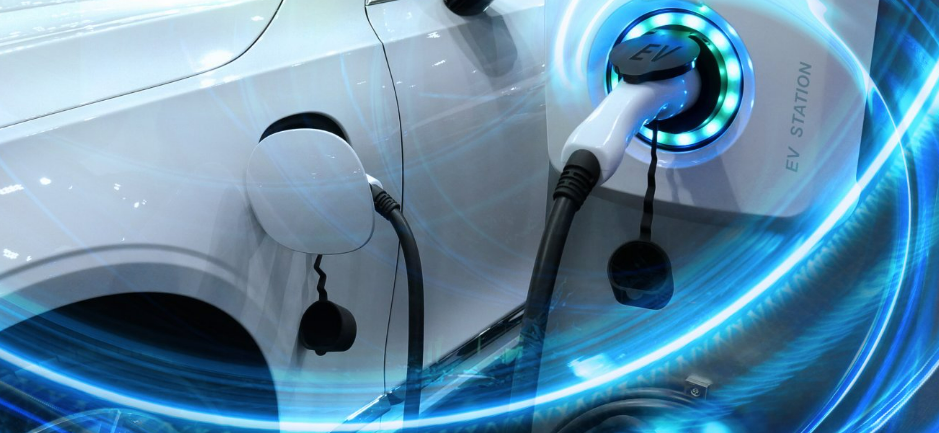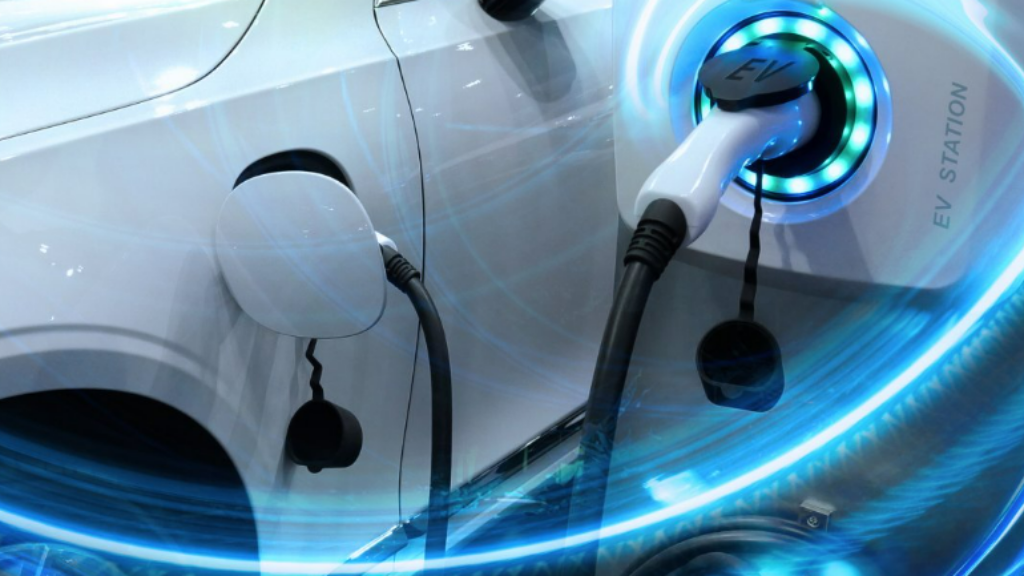
The corporation has 60 days to submit a plan to comply with the notice, which has no immediate effect. But if it doesn’t comply with the Nasdaq Listing Rule, it risked being delisted. In order to finish the audit, the firm “needs additional information and inquiry related to the Company’s China operations,” according to the company.
Strangely, the action caused the share price to rise by 29 percent, to $1.04, even though it has since dropped to $0.95 as of today (March 22).
What exactly is Ideanomics, how does it differ from other EV companies, and what are the stock’s future prospects?
Describe Ideanomics
The Ideanomics Mobility and Ideanomics Capital divisions are run by the New York-based business. The mobility department serves the auto industry as a service provider, assisting in the adoption of commercial operators through procurement, financing, and leasing, as well as through energy management solutions.
The financial services sector’s disruptive fintech solutions are the primary area of concentration for Ideanomics Capital.
By combining the two divisions, Ideanomics can provide partners and customers around the world with technologies and services designed to increase transparency, efficiency, and accountability while giving shareholders access to high-growth industry opportunities.
Professionals from the auto industry, including executives from GM (GM) and Tesla, make up the company’s leadership team (TSLA).
What is Ideanomics’ purpose?
Vehicles, charging, and energy make up the three main EV pillars covered by Ideanomics’ synergistic ecosystem.
“The firm’s aim is to decrease the total cost of ownership for fleet operators while boosting their efficiencies and enhancing the complete value chain through the Ideanomics’ ecosystem,” said Shane McMahon, executive chairman of Ideanomics, to Capital.com.
In order to lower entry barriers into the EV market, new services utilizing the company’s capital division will assist commercial operators in shifting investments from a capital expenditure (CAPEX) model to an operating costs (OPEX) model.
The Vehicle-as-a-Service and Charging-as-a-Service services from Ideanomics seek to alter the industry’s financial paradigm and increase opportunities for EVs in general.
newest news on the IDEX stock
The wireless EV charging technology would be on display at the APTA TRANSform Conference & EXPO in Orlando, according to an announcement made by the EV tech company on November 4th, 2021.
WAVE manufactures high-power, hands-free, and self-contained wireless chargers.
A wireless, hands-free electric vehicle charging system called WAVE is used in warehouses, ports, and transit systems. Without mechanical or human interaction, it quickly increases battery-electric buses’ usable range and power.
WAVE’s tough pads are buried in the asphalt and inconspicuous, unlike plug-in and overhead charging systems that demand time-consuming, hands-on interaction, clutter the ground, and may need unnecessary maintenance.
Power is delivered over a five to eight-inch air gap to a receiving pad on the vehicle’s undercarriage in a matter of seconds after scheduled stops and natural dwell durations.
Fast charging is possible without human or mechanical interaction.
Jain asserts that WAVE could allay the transit sector’s main worry over the uptake of electric vehicles. According to him, “Wave will give the industry instant power to carry heavy passenger loads more effectively.”
Ideanomics currently owns the sole American-made electric tractor on the market in other vehicle categories.
Ideanomics will start working with Say Technologies to improve shareholder communication for their investors.
A communication tool for investors to exercise their ownership rights was created by Say Technologies. Say Connect will be used by Ideanomics to collect investor questions prior to the third quarter earnings call.
According to McMahon, the company’s investors are intimately involved in every acquisition, purchase order, and relationship because they are concerned about a sustainable future.
Through our large portfolio of companies, “our shareholders perceive IDEX as an investment vehicle to catch the increasing trend across energy, infrastructure, and EVs,” he stated.
As the market for electric car manufacturing matures and big-name companies like Tesla and established corporations grow the sector, IDEX stock news is receiving more attention.
The Antelope Valley Transit Authority (AVTA) ordered 19 battery-electric, long-range, ADA (Americans with Disabilities Act) compliant transit vans on February 2. This pleased Ideanomics.
Following the announcement that it had acquired 93.63 percent of Energica’s shares through a voluntary tender offer, Ideanomics declared on March 7 that it was aiming to acquire the Italian electric motorcycle manufacturer Energica. The company hopes to close the purchase by the end of this quarter, subject to regulatory approval. “We believe Energica will greatly benefit from Ideanomics capabilities and continue to be a pioneer in the electric motorcycle sector,” says Alf Poor, CEO of Ideanomics.
Second-quarter earnings report for Ideanomics
The revenue reached a high of $33.2m, representing growth for six consecutive quarters. The first sales from US Hybrid and Solectrac were included in the quarterly results.
The financial results of these companies are only presented as of the date of purchase because they were acquired around the end of the second quarter.
Electric vehicle revenue increased to $6.1 million from $0.7 million in the second quarter of 2020. While charging, batteries, and powertrains brought in $2.7 million. In the same quarter in 2020, no revenues in this category were reported.
The second quarter’s gross profit was $9.3 million, or a gross margin of 28%. Gross profit for the same time period in 2020 was $0.3m.
Earnings per share decreased from $0.15 to $0.02 in the final settlement.
The industry is just getting started, according to Aite-Jain, Novarica’s as “diversification across a range of car segments and geographies are laying the groundwork for a future of sustainable energy.”
The pandemic and the present spike in share price from last year make the upcoming earnings call essential.
The company reported a total revenue of $27.05 million for the three months that ended on September 30. Nearly $10 million of it came from products, and $17 million from services. Additionally, a $4.53 gross profit was disclosed. However, operating expenses exceeded $56 million, leaving a $50.1 million net loss.
developing EV market
By 2030, there will be 34,756 electric vehicles on the road, up from 4,093 in 2021. A rising demand for low-emission transportation and government support of long-range, zero-emission vehicles through subsidies and tax breaks are the industry’s driving forces.
The shift in vehicle production has compelled automakers to provide electric vehicle models for both private and commercial use globally.
According to McMahon, “the switch to EV in commercial sectors has generated a whole new level of issues.”
In contrast to passenger cars, he continued, “commercial EV involves not just significant infrastructural improvements but also energy management, economic models, policy concerns, and more.”
We are creating technology to address the issues of electrification for mid- and heavy-duty trucks, micromobility, agriculture, mass transit, and charging infrastructure.
Developing infrastructure for roads that are EV-ready is among the biggest barriers to the EV market’s expansion.
While numerous governments are building EV charging infrastructure, the majority of nations have not been able to provide a solid base for the usage and mass manufacture of electric vehicles.
According to a MarketsandMarkets research, the Netherlands now has the highest EV charging density per 100km.
Battery life is one further barrier to the global adoption of electric transportation. According to the report, a US EV battery cost about $1,100 per kWh ten years ago. The cost fell to $137 per kWh by 2020.
The price decline is attributed to lower manufacturing costs, lower cathode material costs, and higher production volumes.
Furthermore, it is anticipated that EV battery costs would continue to decline, with kWh prices by 2030 hovering around $60.
WAVE and the mass manufacture of EV batteries are two examples of technological advancements that have helped lower costs. One of the most expensive components of an electric car is its battery.
WAVE technology is now being used in California’s public transit system, and Michigan’s governor is looking for ways to build roadways that will allow EVs to charge while they are being driven on them.
Idex Stock: Will It Rise?
Will the IDEX stock rise? Technically speaking, the price pattern on the daily chart does not indicate a quick price rise. Price has been unable to rise above the 0.99/1.21 support zone since it fell below it. This indicates that there is still a chance for the price to decline.
For the positive reversal, the IDEX stock will need some fundamental support as well as the proper interaction between price and important levels on the chart. Currently, the impending full-year results earnings call is the only fundamental support in sight. Before some demand for the stock returns, this report needs to go up, with revenue and earnings above projections.
IDEX stock prediction for 2022
The short-term Ideanomics stock forecast suggests that the stock may struggle a little before rising beyond the $2 level. The medium-term view for IDEX stock for 2022 predicts that the price will fluctuate between 0.26 and 1.84. Between these two price boundaries, there are a number of targets for support and resistance.
The stock could break above the $2 level after the IDEX stock forecast 2022. Here are a few advantages for this price movement.
For battery powertrain systems to be utilized in Global Environmental Products’ electric street sweepers, Ideanomic’s US hybrid division inked a $5.5 million purchase order. Later in 2022, these will be delivered.
The Antelope Valley Transit Authority has placed an order for Ideanomic’s US Hydrid’s 19 battery-electric vans for long-distance transit. A little more than a week ago, this arrangement was announced.
These recent agreements demonstrate where the world is going in terms of car and engine power.
2025 projection for the IDEX stock
The IDEX stock forecast 2025 has a much higher chance of recovering than it would in earlier years.
The effect of this metric on the markets would have diminished by then, when the Fed is anticipated to have increased rates at least three times. Additionally, the economic impact of COVID-19 is anticipated to have been much more fully recovered by enterprises globally. As a result, electric automobiles and automotive charging accessories would have been used to a greater extent. Additionally, it is anticipated that the partnerships IDEX entered into would have begun to bear fruit, which should increase demand and the value of the stock.
We look to the weekly chart for guidance with regard to the medium- to long-term prognosis for the IDEX stock forecast 2025. The broken support zone, which is now the immediate resistance, is where the candles may be rejected.
In the event of rejection, the 0.99 support, 0.77, and 0.26 become the next targets on the downside. Before the sky becomes clear for an approach to be made at 1.84, any demand-driven bounce from these levels must first eliminate the price zone between 0.99 and 1.21. (16 September 2019 high and 18 October 2021 low).
The following price targets are also for 2025: 2.26, 2.81, and 3.37. The next objective is the psychological resistance at 4.00 and the high of 22 June 2020, which can be reached with a recovery above 3.37.
Does IDEX Make a Good Investment?
IDEX is a terrific stock to buy right now, in my opinion. When compared to other EV car manufacturers like Tesla and Nio, it is relatively inexpensive. Additionally, it is building up strategic relationships along the road, positioning itself as a player in a world without fossil fuels.
In a number of nations, the use of fossil fuels will end between 2025 and 2030. This puts the business in a great position to control key elements of the EV value chain.
Anyone looking to invest in IDEX now must have a medium-term vision of three to five years in mind.
Summary
The outlook for IDEX shares after 2025 appears promising. Stocks like Ideanomics appear to be an appealing investment for individuals looking for medium- and long-term exposure in the EV sector for strong returns due to their cheaper prices than most other EV companies currently on the market.
